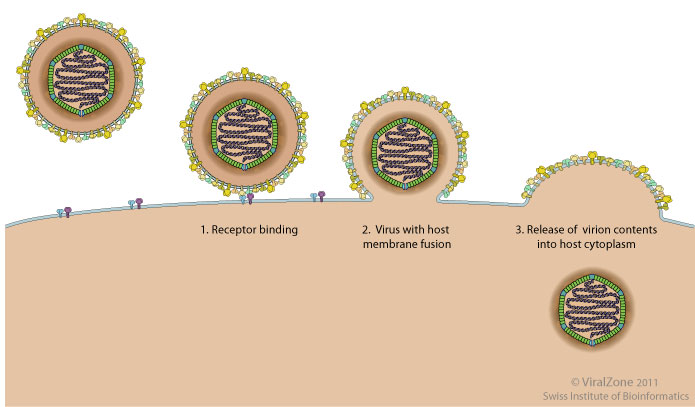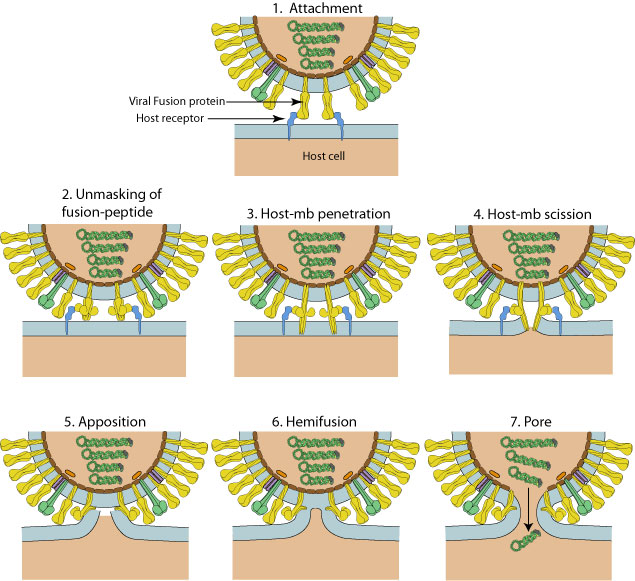Fusion of virus membrane with host cell membrane (kw:KW-1169)

 .
.
Fusion proteins have to be produced in an inactive state in order to avoid to trigger fusion in the Golgi or other compartments upon synthesis and transport to the cell surface. Many are activated in the trans.Golgi network or at the cell surface by proteolytic cleavage which reveals the fusion peptide.
Class I
Class II
Class III
Class IV
Fusion mechanism according to the "viral fusion pore" model of Lee K:
 . A different model has been described with PIV5
. A different model has been described with PIV5


Matching UniProtKB/Swiss-Prot entries
(all links/actions below point to uniprot.org website)225 entries grouped by protein
1 entry
Inner membrane protein pE248R (pE248R)
62 entries
Envelope glycoprotein (Env polyprotein)
62 entries
Fusion glycoprotein F0
35 entries
Envelope glycoprotein H (gH)
36 entries
Envelope glycoprotein L (gL)
1 entry
Late protein H2
2 entries
Protein J5
1 entry
L5 homolog (Protein FPV132)
6 entries
Entry-fusion complex protein OPG086 (EFC protein OPG086) (Protein G3)
7 entries
Entry-fusion complex protein OPG094 (EFC protein OPG094) (Myristoylated protein G9)
6 entries
Entry-fusion complex protein OPG094 (EFC protein OPG094) (Protein L5)
3 entries
Protein OPG104 (Protein J5)
3 entries
